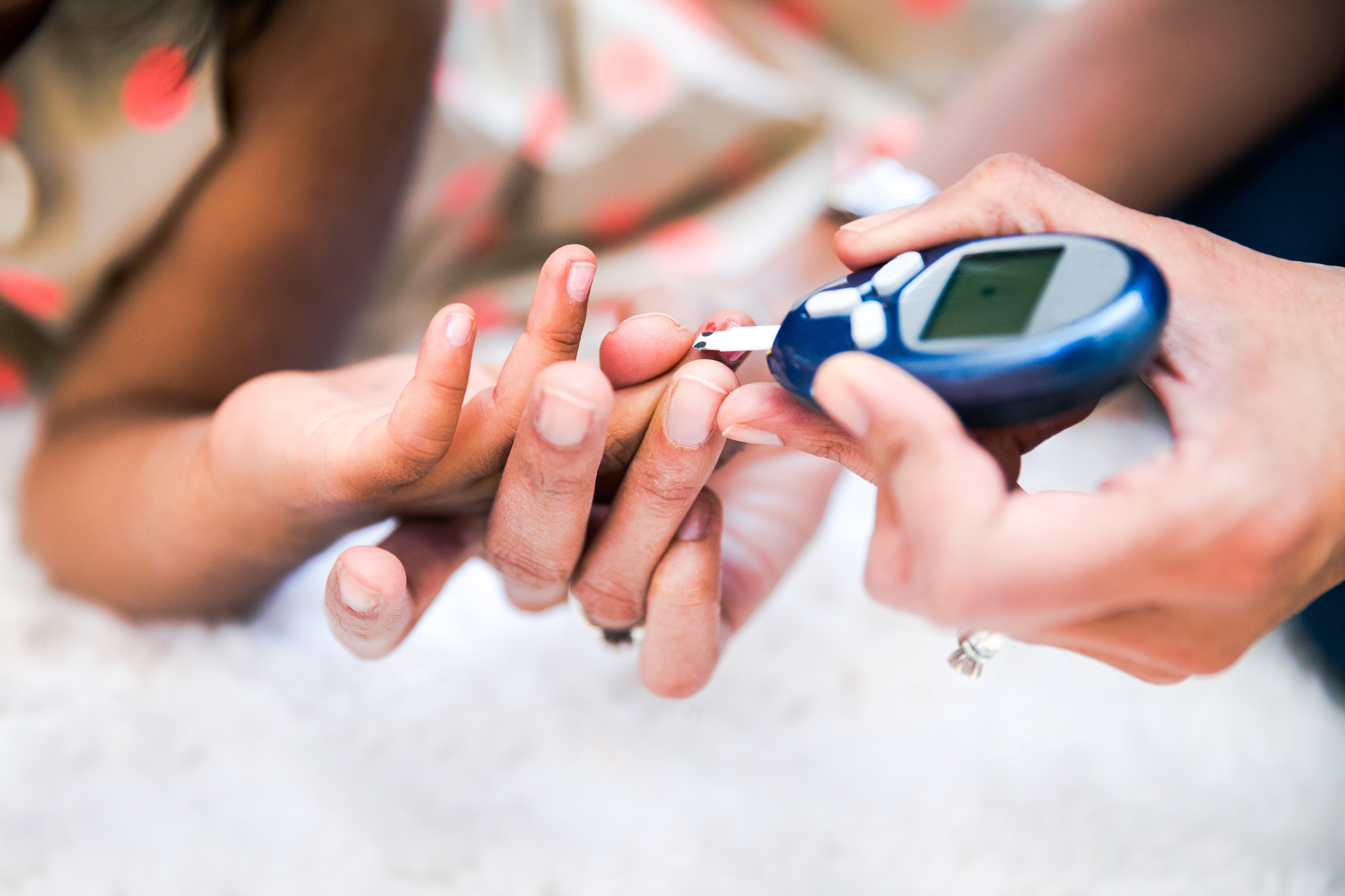Type 2 diabetes is a condition in which the body cannot properly use the insulin it produces (insulin resistance) or does not produce enough insulin. As a result, glucose (sugar) from food and drink stays in the blood, rather than moving to the cells to be used for energy, and
blood sugar levels rise.
This animation depicts what happens in the body in type 2 diabetes. The animation is supplemental. It repeats the information provided below.
How do you develop type 2 diabetes?
What happens in type 2 diabetes?
Type 2 diabetes is the most common type of diabetes in adults. Type 2 diabetes occurs in a smaller proportion of children. Type 2 diabetes is more common in teenagers than in younger children (children younger than 8 to 10 years of age will rarely get type 2 diabetes).
Like with type 1 diabetes, we are unsure why type 2 diabetes develops in some people. Both genetic and lifestyle factors are believed to play a role. There are certain factors that increase the risk of getting the disease. Such as:
- being over the recommended weight range
- having a strong family history of type 2 diabetes (usually a first- or second-degree relative, such as a sibling, parent, or aunt)
- being inactive
- being female
- puberty (changes in hormone levels can cause insulin resistance and decreased insulin action)
- your ethnicity; type 2 diabetes is more common in people of First Nations, African, Southeast Asian, and Hispanic descent.
A family history of type 1 diabetes does not increase the risk of type 2 diabetes.
What are the signs and symptoms of type 2 diabetes?
Compared with type 1 diabetes, type 2 diabetes usually begins with much milder symptoms or without any symptoms at all.

Occasionally, patients with type 2 diabetes will have diabetic ketoacidosis (DKA). This is a serious condition that occurs more often with type 1 diabetes, and can confuse the diagnosis.
All of these symptoms can be signs of high blood sugar levels, indicating that there is an excess of sugar in the bloodstream that is not being carried to the cells. However, some children with type 2 diabetes will have no symptoms at all.
This is important to remember once you are diagnosed and are moving forward with your diabetes care. Even when you feel well, your blood sugar levels can be high. High blood sugar levels can lead to long-term complications. It is therefore important to take care of your diabetes every day.
Screening for type 2 diabetes
Some children can have an increased risk of developing type 2 diabetes. According to the 2013 Canadian Diabetes Association Clinical Practice Guidelines, your child should be screened by having a fasting blood sugar check every two years for type 2 diabetes if:
- Your child is not in puberty and has three or more of the risk factors listed below.
- Your child is in puberty and has two or more of the risk factors listed below.
The risk factors are as follow:
- Your child is above the recommended weight range (a body mass index which is at or above the 95th percentile).
- Someone in the family has type 2 diabetes or the child’s mother had pregnancy-related diabetes (gestational diabetes mellitus).
- Your child’s family’s background is from a high-risk ethnic group (Aboriginal, African, Asian, Hispanic or South Asian descent).
- Your child has been diagnosed with a condition called acanthosis nigricans (dark, velvety patches in skin folds), polycystic ovarian syndrome, high blood pressure, high cholesterol levels, or fatty liver disease; these conditions are associated with insulin resistance.
- Your child has already been diagnosed with high blood glucose levels, although levels are not as high as they are in diabetes (this is known as impaired glucose tolerance or "pre-diabetes").
Certain antipsychotic medications are suspected to increase weight gain, insulin resistance and mimic type 2 diabetes in children. If your child is taking this type of medication, their doctor will screen for type 2 diabetes on a more regular basis.
How is type 2 diabetes diagnosed?
Diagnosing diabetes requires few tests.
The diagnosis of type 2 diabetes is made when there are symptoms of diabetes and a high blood sugar measurement. The diagnosis of type 2 diabetes can also be made if there are no symptoms but two high blood sugar measurements. High blood sugar measurements mean:
- a fasting blood sugar level is more than 6.9 mmol/L
- a random blood sugar level is more than 11 mmol/L
- a blood sugar level two hours after an oral glucose test is more than 11 mmol/L. An oral glucose tolerance test is a test where the blood sugar levels are checked after the child drinks a special sugary drink.
It sometimes can be difficult to tell if a child or teen has type 1 or type 2 diabetes. However, the presence of risk factors (such as increased body weight, family history of type 2 diabetes, or being from a certain ethnic group) can make a diagnosis of type 2 diabetes more likely.
When it is difficult to tell which type of diabetes a child has, other tests may be performed. These include checking for fasting insulin levels, genetic tests, and immune tests that search for specific antibodies that can be present in patients with type 1 diabetes.
